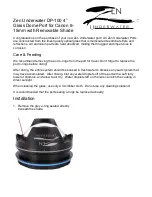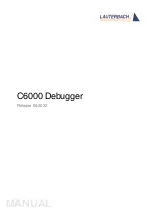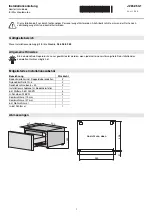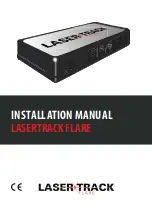
6 - EN
Wireless Sensor RT2e
EL6107E
G e n e r a l a p p l i c a t i o n a n d s a f e t y i n f o r m a t i o n
2.
General application and safety information
2.1
Antenna position
Range approx.
1000m
The range (always dependent upon the structural conditions of the building such as cement ceilings, water
pipes etc.) is approx. 100m in a typical office environment
5.1
Radio settings
.
In which direction
should
the antenna
point?
With this type of antenna, the signal is emitted at right angles from the antenna. The direction can be
visualized as being like a CD that is skewered on the antenna. This makes it clear that it is best for the
antenna to be placed vertically, pointing upward, so that it transmits to all rooms on the same floor. If the
antenna is placed horizontally, reception is best on the floors above and below.
Metal objects such as shelves, reinforced concrete walls, ventilation and energy shafts, but also the
opening of a refrigerator door can lead to the weakening of the signal. This kind of effect is usually very
much limited to the location.
Moving the wireless sensor within an area of 2.5 meters (sometimes just a few centimeters) is usually
adequate to completely change the reception (
3.1.1
Transmitted frequency & radio channel
). Move
the wireless sensor forward, backward, up and down within this area. The wireless sensor should always
be mounted at least 1.5m above the ground.
If no direct line of sight to the wireless sensor is available, the angular position (angle in relation to the
horizontal axis and rotation of direction) can improve reception.
Placing the wireless sensors in an open stairwell is an additional possibility to avoid one or more reinforced
steel ceilings that are an obstacle.
For additional details regarding the antennas
5.1
Radio settings
2.2
Temperature effect
- For the range of application,
5.
Technical data
.
- It can't be guaranteed that the loggers will function properly if the datalogger is exposed to
temperatures which exceed the specified threshold range. Experience shows that at storage
temperatures below -50°C, the battery freezes, measurements are no longer taken and setpoint
tracking may be temporarily interrupted. Once it has been returned to room temperature, the logger
must be reprogrammed before it can be used again.
- At temperatures below - 20°C, the display is not easily readable; however, longterm use is not
affected.
- For longterm use above 40°C, lithium battery passivation can lead to temporary reading problems
(self-discharge protection), which can be resolved with repeated utilization.
- At temperatures above 45°C, battery self-discharging increases. With long term use above 45°C, the
battery lifetime can be reduced by about 1/3.
- Exposure to temperatures above 55°C can result in permanent discoloration of the display.
- There is danger of a gas explosion if the lithium battery is heated to temperatures exceeding 100°C.
2.3
Exceptional environmental conditions
Pay attention to the following when using the wireless sensor in exceptional environmental conditions:
- IR radiation (heat) and superheated steam can damage the surface coating of the casing
- There is a risk that the battery may explode if the logger is used under microwave radiation
Initial startup
THE WIRELESS SENSOR MUST BE AT ROOM TEMPERATURE BEFORE INITIAL
STARTUP!
Содержание RT2e
Страница 1: ...Wireless Sensor RT2e EL6107E Wireless Sensor RT2e Operation Manual...
Страница 2: ...2 EN Wireless Sensor RT2e EL6107E...
Страница 14: ...14 EN Wireless Sensor RT2e EL6107E Technical data 5 5 Label Locations...
Страница 15: ...EN 15 Wireless Sensor RT2e EL6107E Technical data IT ES EN EN FR IT ES 5 6 Dimensional drawing...
Страница 19: ...EN 19 Wireless Sensor RT2e EL6107E Approvals IT ES EN EN FR IT ES...







































